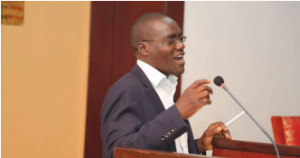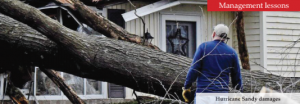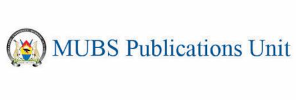
Prof. Vincent Bagire
Deputy Dean
Faculty Of Graduate Studies and research
Hurricane Sandy was the deadliest, the most destructive, and the strongest hurricane of the 2012 Atlantic hurricane season. The storm inflicted nearly $70 billion in damage and killed 233 people across eight countries from the Caribbean to Canada, hitting a space of 10 days. The issue here is not the hurricane itself nor the destruction but the direction of response by Authorities and Aid agencies.
I am prompted by news bytes that various government agencies clashed on the implementation of the Shs100,000 relief fund. I have used this case to teach my masters students the concepts of decision making, relational dynamics and node communities. Handling Covid 19 related decisions requires managerial deftness. It is a pandemic and nothing is in waiting. While society is getting impatient, management scholarship avers that government is right in its decision making for public interest.
The implementation of such relief funding however, required a different dynamic, at the intersection of art and science. That is where logic is stuck. In responding to the ravaging Hurricane Sandy, Authorities set up committees, mobilized aid agencies, civil society and other formal structures. Meetings and consultations were in pace. Decisions on the how and when; who and where were spiral. Meantime affected communities hang in waiting. Occupy Sandy, a group of half a dozen veterans, mobilized volunteers to come to the aid of the needy. They headed to devastated communities handing out whatever they had collected. They gathered food items, materials, medical supplies and borrowed trucks.
They used twits, face book posts and social networks. Through these node communities, they threw up digital flags and donations rolled in. In as much dynamism they covered whole sections of affected communities. It came to the extent that even some aid agencies gave supplies to Occupy Sandy. The lessons for management students are intuitive. Occupy Sandy had never done this before, unlike the Agencies who were wedged in decision spirals. They had no infrastructure, hierarchy or tangible resources. However, Occupy Sandy eased life for devastated communities faster than established structures. Decisions were made collaboratively, they functioned dynamically not consistently as in recognized agencies.

They turned churches into distribution centers, volunteers worked, shuttled supplies to those in need, cooked hot meals and planned for shelters. The interaction between peer nodes is a relational dynamic. It reflects a network that moves back and forth in a highly effective mutuality with complex coordination. Peer to peer (P2P) architecture allows for efficient sharing of information. The critical elements in the relationship freely react to situational realities.
There is no individual poising skills and knowledge to the emergence; rather a catalyst enabling interdependency of different people to act as equals while defining processes, plans, strategies and working together towards a common goal. In government’s current predicament of how and to whom to distribute relief funds, hierarchies, line management, leadership and experiential wisdom are inputs that society is perceiving as insensitive to needs of the vulnerable. After match time, government needed to eat humble pie and with deftness redraw the plan. This is an emergency where the much-needed support should not delay in decision ditties. The Authorities should have used node-communities to establish the deserving individuals; use end points to get their contacts and verify at the next level. Markedly, those in need are there; the only difference between them and government money point is the genuine telephone lines to be used.
In simple decision modeling, the constraints are known and can be held subject to each other. Let us start from LCI. The holdout elements are those who live and or work in that jurisdiction. Secondly, their level of need is assessable. The next level should have been building the registry with contact telephone lines, hence halving the key constraint. The final level would be verification of people and contacts, in two spatial dimensions, community and local government. I don’t wish to attach possible timelines, butin an emergency with known government machinery this is a matter of few days. This needed not be a massive roll out, but gradual, consistent and systematic. It is relieving when one communal setting is served and the neighbors assured of their turn. Through node communities and P2P architecture, the relief given would be shared with those in waiting; a reversal pattern would then occur thus sustaining temporal relational support among beneficiaries.
Gaps in the formalities by Authorities bred Occupy Sandy response. A school of thought would see absence of a hierarchy as anarchy; but this enabled Occupy Sandy to serve efficiently to situational realities. P2P architecture is where there is no higher governing authority but a relational dynamic between equals, individual nodes, resulting in a complex thinking and action for a common goal. May our leaders not put themselves into public scrutiny.
